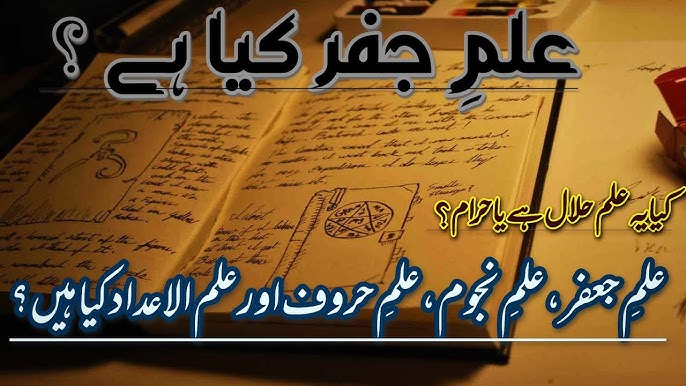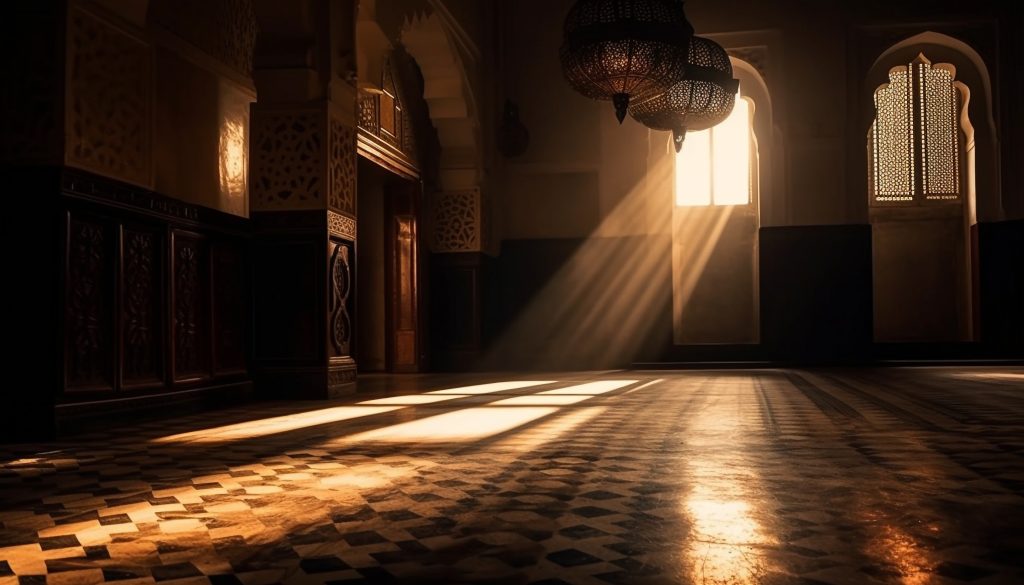Introduction to Ilm e Jafar
At Umrah International, we recognize the significance of spiritual knowledge in guiding individuals on their life journeys. One such profound area is Ilm e Jafar, a discipline that blends divination, numerology, and the mystical meanings of letters. Our goal is to illuminate this ancient art, offering insights and resources for those seeking to explore its depths.
What is Ilm e Jafar?
Definition and Core Concepts
Ilm e Jafar, often referred to as the “Knowledge of Jafar,” encompasses a system that interprets the numeric values assigned to letters. This methodology serves as a means for divination, enabling practitioners to uncover hidden truths and receive guidance on various life questions. It requires a disciplined approach to mastering its complex formulas.
The Purpose of Jafar
The primary purpose of Ilm e Jafar is to provide clarity and insight. Practitioners employ this knowledge to predict future events, solve personal dilemmas, and enhance their understanding of the spiritual realm.
The Historical Development of Ilm e Jafar
Ancient Origins and Prophetic Traditions
Ilm e Jafar is believed to have been revealed to Prophet Adam (peace be upon him), marking its inception in human history. This divine knowledge has been carefully preserved through generations, passed down by Prophets and Imams, culminating in the teachings of Imam Jafar Sadiq (peace be upon him), who formalized many of its principles.
Key Historical Figures
Over centuries, numerous scholars have contributed to the body of knowledge surrounding Ilm e Jafar. Figures such as Imam Ahmed Raza Barelvi and Mansoor Ibne Halaj Baghdadi have documented their insights, providing a rich historical context that validates the practice.
The Linguistic Framework of Ilm e Jafar
Understanding Jafar Terminology
To fully grasp Ilm e Jafar, one must familiarize themselves with its specialized vocabulary. Terms unique to this field describe various methods and practices that are crucial for effective application.
Translating Jafar to English
Our initiative at Roohanialoom seeks to make Ilm e Jafar accessible by translating its concepts into English. This effort includes introducing the English alphabet’s relationship to Jafar, thereby broadening its reach and understanding among non-Arabic speakers.
Methodologies and Formulas in Ilm e Jafar
Jafar Formulas Explained
The essence of Ilm e Jafar lies in its myriad formulas, which practitioners use to derive answers. Each formula operates independently; thus, a clear understanding is vital to avoid confusion and ensure accurate results.
Practical Techniques for Application
Our series will guide readers through practical techniques for applying Jafar formulas effectively. This includes step-by-step instructions that cater to various skill levels, from beginners to advanced practitioners.
Talisman and Amulet Creation
The Art of Crafting Spiritual Items
Creating talismans and amulets is a significant application of Ilm e Jafar. These items are believed to possess protective qualities and serve as conduits for spiritual energy. Our upcoming articles will provide detailed methodologies for crafting these powerful artifacts.
The Symbolism Behind Talismans
Understanding the symbolism associated with talismans is crucial for their effective use. Each design element carries meaning, enhancing the practitioner’s intention and focus during the creation process.
Ethical Guidelines for Practicing Ilm e Jafar
Importance of Ethical Conduct
Practicing Ilm e Jafar requires adherence to a strict code of ethics. This includes maintaining humility, engaging in regular prayer, and seeking legitimate means of livelihood. Such practices enhance one’s spiritual receptivity and ensure responsible use of this powerful knowledge.
Daily Practices for Aspiring Practitioners
Incorporating specific daily practices can greatly enhance one’s connection to Ilm e Jafar. Regular ablution, charitable giving, and sincere prayer are fundamental to cultivating a fruitful practice.
Branches of Ilm e Jafar
Distinguishing Between News and Impact
Ilm e Jafar is divided into two main branches: News (Al Akhbar) and Impact (Aasar). The News branch focuses on inquiry and the process of answering questions, while the Impact branch pertains to creating spiritual tools, such as talismans. Understanding these branches is essential for effective practice.
Applications of Each Branch
Both branches serve unique purposes in the study of Ilm e Jafar. The News branch is invaluable for personal guidance, while the Impact branch allows practitioners to explore the tangible manifestations of their spiritual insights.
Contemporary Relevance of Ilm e Jafar
Ilm e Jafar in Modern Society
In today’s fast-paced world, the relevance of Ilm e Jafar has expanded. Many seek spiritual answers and guidance, turning to this ancient knowledge for clarity amidst chaos. Our resources aim to bridge the gap between tradition and contemporary needs.
The Future of Ilm e Jafar
As interest in spiritual practices grows, the future of Ilm e Jafar looks promising. Our ongoing efforts at Umrah International will focus on preserving this knowledge and adapting it for modern practitioners, ensuring its continued relevance.
Understanding the Controversy: Is Ilm e Jafar Haram?
Introduction: The Debate Surrounding Ilm e Jafar
The discourse around Ilm e Jafar, a mystical and esoteric practice rooted in Islamic tradition, has often sparked debates regarding its permissibility in Islam. Many scholars and practitioners have highlighted its benefits, yet there remains a faction that labels it as “haram” (forbidden). This blog aims to delve into the historical authenticity and scholarly validation of Ilm e Jafar, presenting evidence that counters claims of its prohibition.
Historical Perspectives on Ilm e Jafar
The Historical Significance of Jafar
Ilm e Jafar, or the knowledge of Jafar, has been an integral part of Islamic scholarship for centuries. It encompasses the study of letters, their numerical values, and the intricate relationships between them, serving as a method for divination and spiritual insight. Despite its long-standing history, modern interpretations often mischaracterize this practice, dismissing it without a thorough understanding.
Scholarly Endorsements of Ilm e Jafar
Numerous respected scholars have explored and validated the principles of Ilm e Jafar. Below is a list of notable scholars and their significant works that underscore the authenticity of this discipline:
- Imam Ahmed Raza Barelvi: Risala Fi Aljafr
- Mansoor Ibne Halaj Baghdadi: Sir Al Israr
- Mansoor Ibe Arabi: Behar Al Waquf ILM Al Haroof
- Abu Al Khair Rabey: Nasus Al Anwar Harfia
- Abdullah Qurtabi: Fasus Al Haroof
- Mohiuddin Ibne Arabi: Qawaneen e Taqveen
- Nasir Uddin Toosi: Israr e Jafr
- Imam Ghazali: Zairjat o Ashraf Al Murrabaat
- Imam Khomeini: Kashaf ul Akhbar
- Tookhi Al Falqi: Sir Al Akhbar
These scholars represent both Sunni and Shia traditions, collectively establishing the rich scholarly heritage surrounding Ilm e Jafar.
The Legacy of Imam Ghazali
A Beacon of Knowledge
Imam Abu Hamid Muhammad Bin Muhammad Al Ghazali, known as Hujjat Al Islam, holds an esteemed position among Islamic scholars. His works have significantly contributed to Islamic thought, and his recognition of Ilm e Jafar adds credibility to its practice. Despite contemporary fatwas against Jafar, Imam Ghazali dedicated much of his scholarly life to defending its authenticity.
References from Historical Texts
Several historical texts, including Mirrat ul Janan by Imam Yafeye, highlight Imam Ghazali’s extensive knowledge and contributions. His discussions surrounding Jafar reflect his understanding of its importance within Islamic mysticism.
The Rationale Against the “Haram” Label
If Ilm e Jafar were indeed haram, one must question why such an influential figure like Imam Ghazali invested considerable time and effort in validating its principles. This discrepancy raises critical questions about the authority of modern interpretations that dismiss the practice.
The Symbolism and Origin of Ilm e Jafar
Etymology and Cultural Significance
The term “Jafar” is historically linked to a young goat, specifically one that has ceased to suckle from its mother. This connection illustrates the notion of maturity and the transition into a new phase of understanding.
References in Islamic Texts
Allama Kamal Uddin Dameri, in his work Hayat Al Heywan, suggests that Ilm e Jafar predates the Prophet Muhammad (peace be upon him). Additionally, references in the Holy Quran (Surah Al Araf, verses 145-150) link Jafar to the scriptures of Prophet Musa (peace be upon him), further validating its significance.
The Divine Revelation of Jafar
The Role of Prophet Muhammad (PBUH)
It is believed that the foundational principles of Ilm e Jafar were revealed during the time of Prophet Muhammad (peace be upon him). According to historical narratives, the Prophet arranged for the writing of these principles on goat skin, which solidified the practice’s identity.
The Incident at Mount Uhud
An anecdote recounts an event where the Prophet took Hazrat Ali (peace be upon him) to Mount Uhud. Following divine instruction, the Prophet called upon goats, which led to the writing of sacred knowledge with a special ink that would never fade. This event symbolizes the deep spiritual connection of Ilm e Jafar to prophetic teachings.
Teachings of Imam Jafar Sadiq
Transmission of Knowledge
Imam Jafar Sadiq (peace be upon him) played a crucial role in the evolution of Ilm e Jafar. He emphasized that the knowledge contained within the Jafar teachings is accessible only to the Prophet Muhammad (peace be upon him) and his rightful successors.
The Alphabetical Foundation
The teachings specify that knowledge is derived from two primary alphabets. Imam Jafar Sadiq elaborated on the extraction of meanings from letters, asserting that mastery of this knowledge requires divine guidance.
Authenticity and Recognition of Ilm e Jafar
The Enduring Legacy of Jafar
The book of Jafar, written by Hazrat Ali (peace be upon him) and later copied by Imam Jafar Sadiq (peace be upon him), has been preserved through generations of the Sayyid family. This transmission exemplifies the authenticity and respect surrounding the knowledge.
Validation by Sunni and Shia Scholars
Both Sunni and Shia scholars have acknowledged the authenticity of the Jafar teachings. This consensus is significant in debunking misconceptions regarding its prohibition.
The Superiority of Ilm e Jafar Over Other Divinatory Practices
A Comparative Analysis
Allama Abdullah Al Jazairi asserts that Ilm e Jafar offers more reliable answers than astrology or geomancy, marking it as a living miracle of the Holy Quran. The precision of Jafar answers is often linked to verses from the Quran, enhancing its spiritual credibility.
Practical Applications in Daily Life
Individuals seeking guidance through Ilm e Jafar often find profound insights, provided they approach it with sincerity and integrity. The practice allows for an understanding of life’s complexities through a spiritual lens.
.Conclusion:
At Umrah International, we are passionate about sharing the rich legacy of Ilm e Jafar. By providing resources and guidance, we aim to empower individuals to explore this profound discipline. Join us in uncovering the mysteries of Ilm e Jafar, and let us assist you on your spiritual journey. Together, we can navigate the depths of this ancient knowledge and apply its wisdom to enrich our lives.
The ongoing discourse surrounding Ilm e Jafar necessitates a deeper exploration of its historical roots and scholarly endorsements. At Umrah International, we aim to provide informative resources that promote understanding and appreciation of this ancient discipline. As we continue to publish articles on this topic, we invite readers to engage with the rich legacy of Ilm e Jafar and consider its relevance in contemporary spiritual practices

















